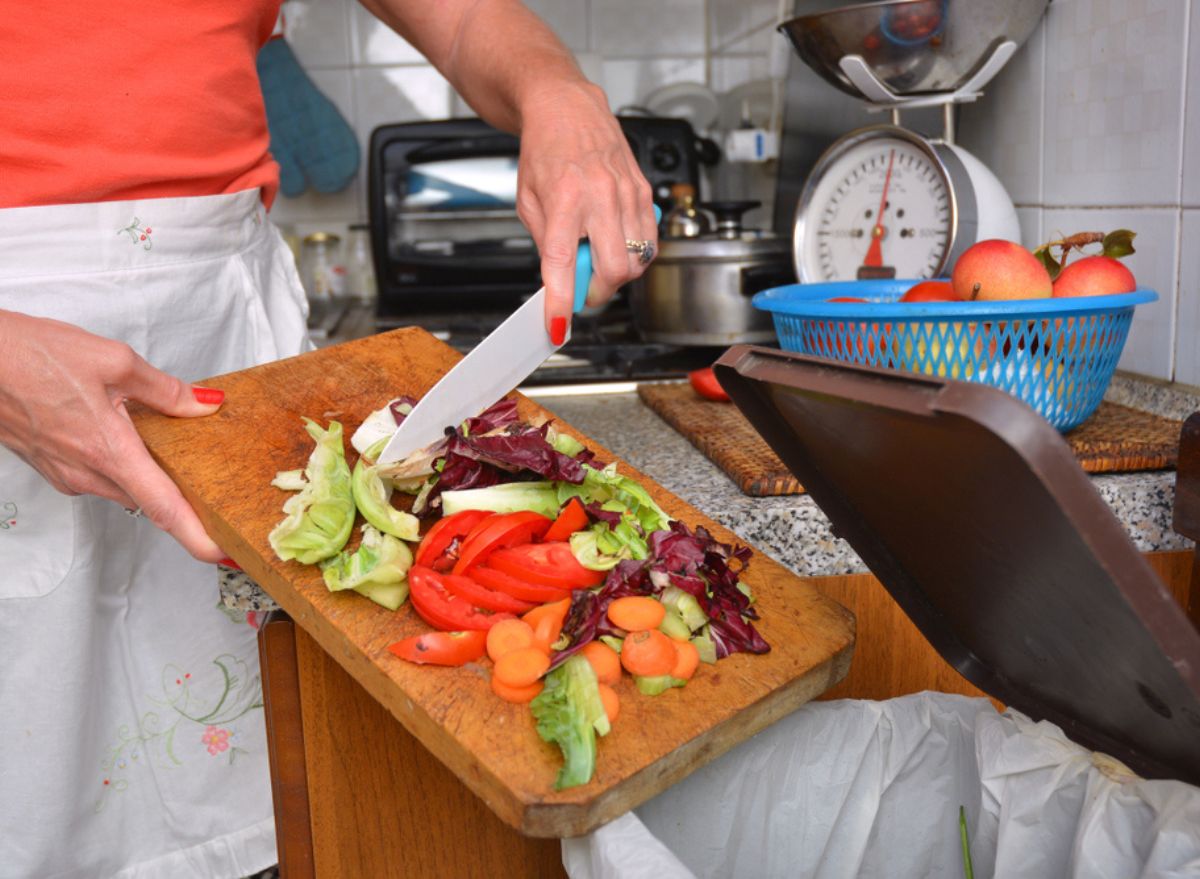11 tips to help you waste less food in the kitchen – Eat This, Not That
If you like to cook, you probably hate throwing away good food. Whether it’s the high cost of that waste or the shame of not being able to put those extras to good use, throwing away extra ingredients or leftovers never does any good…and yet so many of us do it. .
In fact, according to a Harris poll (conducted with Omaha Steaks), almost half of the country throw away fresh meat every month.
Since you should be making delicious, nutritious food in the kitchen and using every great ingredient to its full potential (so you don’t break the bank!), here are some expert tips from working chefs on the best ways to avoid the food waste in your own kitchen. Read on for their genius tips, tricks, and tricks for using every last bit, and then don’t miss the hottest items at Costco right now.
First of all, don’t buy too many ingredients to start with!
“Please read the full recipe before you start cooking,” says Chef Rhonda Plummer of Cater2uSF. “It’s also a good idea to get everything ready. Do all the chopping, then set those ingredients aside while you gather the remaining items. This will help keep things tidy, prevent burns, and make cooking easier. ” Plus, it will help you avoid wasting ingredients right from the start.

You don’t want to spill good food all over the kitchen, which is an often overlooked method of food waste. Chef Plummer explains: “Always use the right equipment for the right job; if you use pots and pans that are too small, your food will end up on the bottom of the oven. But if it’s too big, it’s likely to burn the bottom of the oven. the pan.”

“TO Select an oyster barwe use leftover fish to make a rich fish broth and prawns for bouillabaisse,” explains Chef Michel Serpa. “It’s a great way to reuse the rest of the seafood we offer on the menu in a delicious and eco-friendly way and reduce our kitchen waste at the same time”,
“Home cooks can do the same and freeze the broth to use in later recipes instead of buying it pre-made, which is usually much less vibrant and complex in terms of flavor,” Serpa adds.

Chef Ryan Marcouxthe executive chef at Grill 23, recommends using leftover fats or oils to cook your vegetables. “For our Thumbelina carrot dish, we liquidize all of the A5 Japanese wagyu fat, then slowly cook the carrots in the beef fat, which concentrates their sweetness and gives them an extra layer of beef tallow flavor,” says- he.

“You bought more fruit than you can eat? Chop ’em up,” says Chief Plumer. “Put them in freezer-sized sandwich bags and then use them for smoothies.” So smart!

When you get home from the store, put the meat you don’t cook right away in the freezer. “Frozen quality meat ensures you’re ready for summers on the go with the kids and barbecues with friends and family. Simply quickly thaw only the meat you need to reduce or eliminate waste,” explains Omaha Steaks executive chef david rose. “It’s a simple solution that your favorite restaurants and chefs use and that home cooks can benefit from too.”

“When using parmesan cheese, you can make an amazing tasting broth by soaking the hard outer crust in broth or even milk,” explains Chief Daniel KenneyExecutive Head of CLINK at Liberty Hotel. “Or let it sit in a light olive oil for about a week, which will give your oil a nutty parmesan flavor that’s great for drizzling on just about anything.”
BRB… give this clever trick a try right away!

You can use leftover vegetables for stocks and sauces, says Chef Plummer. “It makes a broth with less sodium than canned broth.”
Or, she suggests chopping, sautéing, then freezing the vegetables to later toss them into the tomato sauce for a heartier dish.

“I also think canning and preserving are great ways to use up excess food,” says Chef Kenney. “Sometimes home cooks are afraid of the terms ‘canning’ and ‘preservation’, but essentially all you need are simple mason jars with lids and a pot of simmering water to create your own canning operation. Then when you have too much fruit, you can make jam, or if you have too many tomatoes, you can make marinara.”

“Not wasting food is key to having a successful restaurant, because food is money,” says chef Marcoux. “We use the butcher’s trimmings from our steaks in our meatloaf. Not only is it a savvy way to avoid waste, but we use all premium, dry-aged American Kobe beef to make a delicious appetizer for our guests.”

“Save seafood and animal carcasses for flavorful broths with less sodium than canned broth,” says Chef Plummer, who has cooked for NFL athletes. “Don’t forget to brown [bones] before boiling over medium-low heat for a minimum of two hours for a rich broth. Bone broth contains additional nutrients that are very rich in vitamins such as calcium, magnesium, vitamins A and K, fatty acids, zinc, iron, phosphorus and amino acids.”



Comments are closed.